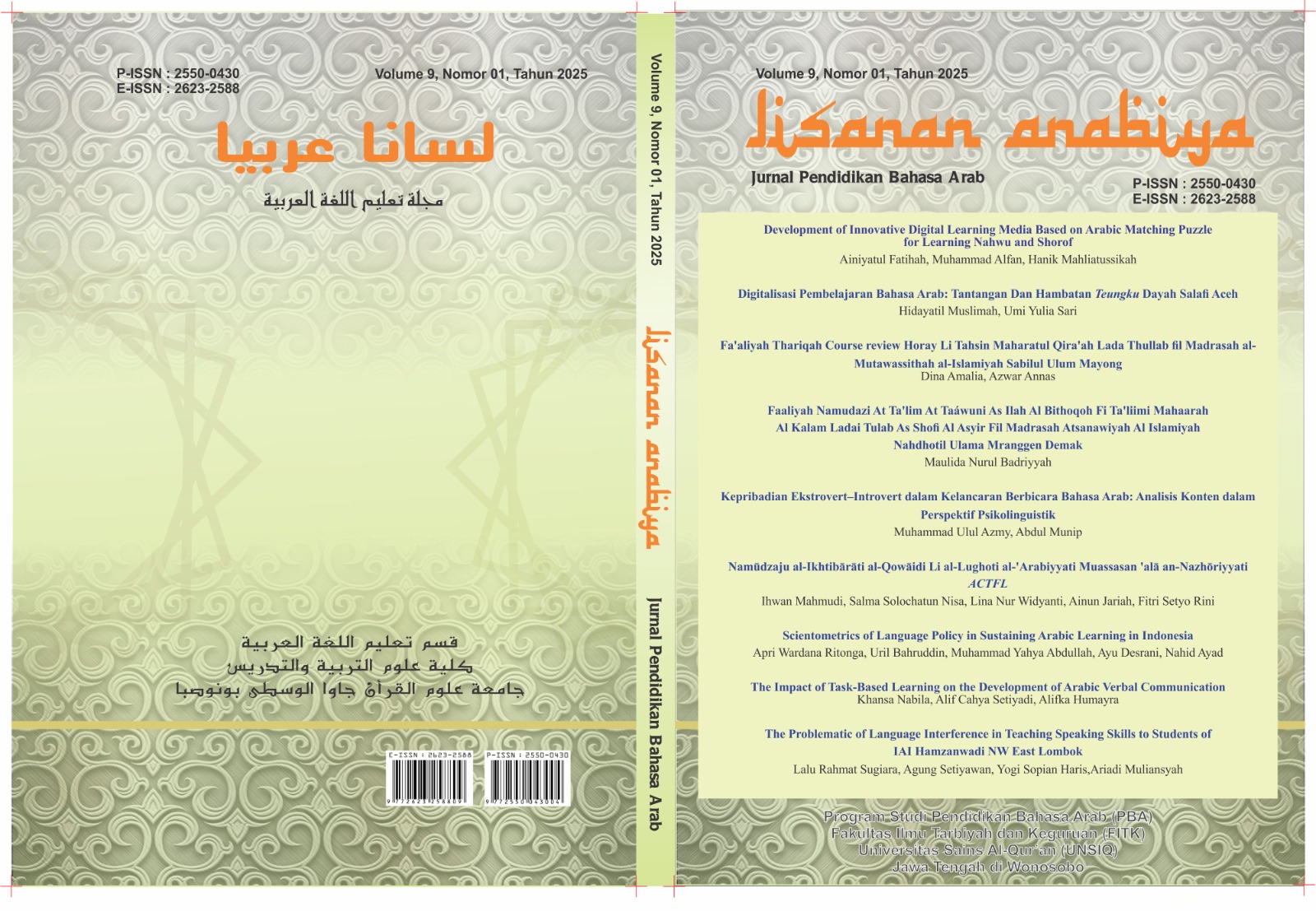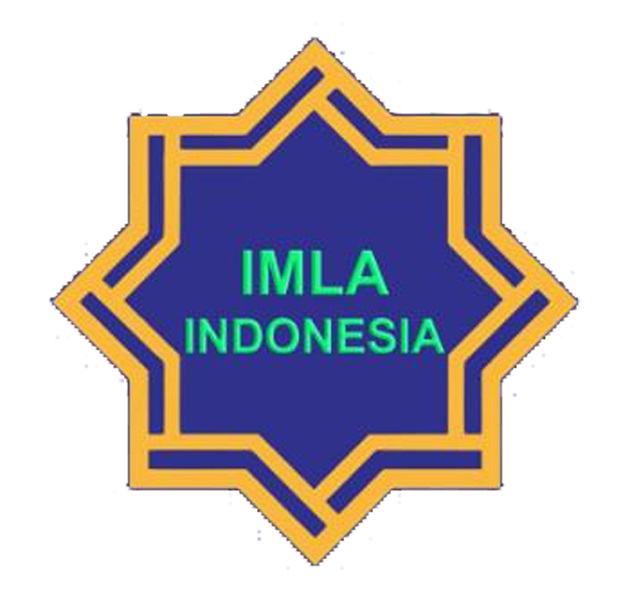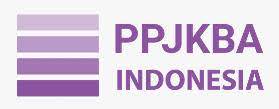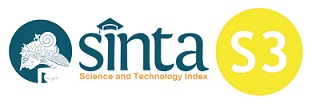The Problematic of Language Interference in Teaching Speaking Skills to Students of IAI Hamzanwadi NW East Lombok
Abstract
The teaching of Maharah al-Kalam (speaking skills) at the Islamic Institute of Hamzanwadi Nahdlatul Wathan, East Lombok, faces various issues related to language interference. These challenges arise when students struggle to express ideas and thoughts spontaneously in Arabic due to the influence of their mother tongue (Indonesian) and regional languages. This study aims to deeply examine the issues of language interference in teaching Maharah al-Kalam at the Islamic Institute of Hamzanwadi Nahdlatul Wathan, East Lombok. It seeks to identify the forms of language interference occurring and analyze the underlying factors. The research employs a field research method with a qualitative approach, involving direct observation, in-depth interviews, documentation, and analysis of student speech transcripts. The study reveals the complexity of linguistic challenges faced by students in mastering Arabic speaking skills. Language interference was identified in three dimensions: phonology, syntax, and vocabulary, driven by limited exposure to Arabic, traditional teaching methods, and the dominance of the mother tongue. The impacts of interference include a decline in students’ confidence and reduced quality of Arabic communication. To address these issues, the research proposes comprehensive solutions, such as developing practical teaching methods, raising linguistic awareness, employing a contrastive approach, and implementing intensive training techniques like drilling and role-playing.
Downloads
References
Abdullah, I., Rahmi, N., & Walfajri, W. (2021). Pembentukan Lingkungan Bahasa Arab Untuk Mengembangkan Keterampilan Berbicara. Taqdir, 6(2), 71–83. https://doi.org/10.19109/taqdir.v6i2.6283
Ahmad Muradi. (2019). Kesadaran Linguistik dalam Pembelajaran Bahasa Arab: Analisis Interferensi Bahasa. Al-Ta’rib: Jurnal Pendidikan Bahasa Arab Dan Kebahasaaraban, 6(2), 142–156. https://doi.org/10.23971/altarib.v6i2.345.
Ainin, M. (2020). Moh. Ainin, “Penelitian Pengembangan dalam Pembelajaran Bahasa Arab,” Jurnal Okara 2, no. 8 (2020): 96-110, https://doi.org/10.19105/ojbs.v14i2.3123. Jurnal Okara, 2(8), 96–110. https://doi.org/10.19105/ojbs.v14i2.3123.
Alfansyur, Andarusni; Mariyani, M. (2020). Seni mengelola data: Penerapan triangulasi teknik, sumber dan waktu pada penelitian pendidikan sosial. Jurnal Kajian, Penelitian Dan Pengembangan Pendidikan Sejarah, 5.(2:), 146-150.
Amalia, D. R., Hidayatullah, R., Anwar, M. S., & Irhamudin, I. (2019). Interferensi Bahasa Indonesia ke dalam Bahasa Arab di Pondok Roudlatul Qur’an Metro Lampung. Attractive : Innovative Education Journal, 1(1), 80. https://doi.org/10.51278/aj.v1i1.6
Anwar, H. zaina. (2016). Efektivitas Penggunaan Media Gambar dalam Pembelajaran Bahasa Arab. Lantanida Journal, 4(2), 131. https://doi.org/10.21274/arabia.v8i1.234.
Arimbi Pamungkas, A. T. (2022). Interferensi Bahasa Arab Pada Mahārah Kalām dan Kitābah pada Pondok Pesantren Putri Ibnu Qoyyim Yogyakarta (Analisis Morfologi dan Sintaksis). Students’ Difficulties at Elementary School in Increasing Literacy Ability, 4(1), 1–12.
Bialystok, E. (2010). Metalinguistic dimensions of bilingual language proficiency. Language Processing in Bilingual Children, 18(3), 113–140. https://doi.org/10.1017/cbo9780511620652.008
Böhme, W., & Klaver, C. J. J. (1997). Chamaeleonidae. In Chamaeleonidae. Linguistic Circle of New York. https://doi.org/10.1515/9783110815405
Cook, V. (2017). Innovations in Bridge Engineering Technology. In Innovations in Bridge Engineering Technology. Routledge. https://doi.org/10.4324/9780203938492
Endarto, I. A. M. (2022). Analisis potensi implementasi metaverse pada media edukasi interaktif. BARIK-Jurnal S1 Desain Komunikasi Visual, 4.(1:), 37-51.
Faizah, R., & Hanafi, W. (2017). Interferensi sintaksis bahasa Indonesia dalam kemahiran berbahasa Arab (Studi edukatif materi Insyā’ di Ma‘had al-Jāmi‘ah UIN Walisongo Semarang). Linguista: Jurnal Ilmiah Bahasa, Sastra, Dan Pembelajarannya, 1(2), 71. https://doi.org/10.25273/linguista.v1i2.1975
Flege, J. E. (1995). Second Language Speech Learning: Theory, Findings, and Problems Dalam W. Strange (Ed.), Speech Perception and Linguistic Experience: Issues in Cross-Linguistic Research. Studies in Second Language Acquisition, 17(2), 233–277. https://doi.org/10.1017/S0272263100015000
Grosjean, F. (2023). Studying Bilinguals. In Studying Bilinguals. Oxford University Press. https://doi.org/10.1093/oso/9780199281282.001.0001
Harahap, P. (2017). Perbandingan Pengajaran Keterampilan Berbicara Bahasa Arab dan Bahasa Inggris di Sekolah Tinggi Agama Islam Negeri Curup. Arabiyatuna : Jurnal Bahasa Arab, 1(2), 153. https://doi.org/10.29240/jba.v1i2.323
Hasanah, H. (2017). Teknik-teknik observasi (sebuah alternatif metode pengumpulan data kualitatif ilmu-ilmu sosial). At-Taqaddum, 8(.1), 21-46.
Hendra, F. (2021). Problematika Pembelajaran Bahasa Arab di Era Digital: Perspektif Metodologis dan Psikologis. Al-Ta’rib: Jurnal Pendidikan Bahasa Arab Dan Kebahasaaraban, 7(1), 45–58. https://doi.org/10.23971/altarib.v7i1.2341.
Hindun, H. (2024). Qismul Arab : Journal of Arabic Education Interferensi Bahasa Daerah dalam Pembelajaran Bahasa Arab : Analisis. 3(02), 106–112.
Inderasari, E., & Agustina, T. (2017). Pembelajaran Bahasa Indonesia Pada Mahasiswa Asing Dalam Program Bipa IAIN Surakarta. Jurnal Pendidikan Bahasa Dan Sastra Indonesia, 6(2), 6–14. https://journal.unnes.ac.id/sju/index.php/jpbsi/article/view/20226
Lado, R. (1957). Linguistics Across Cultures: Language Learning and Language Teaching. University of Michigan Press.
MacWhinney, B. (2005). The Competition Model: The Input Interaction Model of Language Development". Dalam C. Fletcher & M. MacWhinney (Eds.), Computational Models of Language Acquisition. Journal of Child Language, 32(1), 87–104. https://doi.org/10.1080/15475441.2005.9684223
Maisaroh, S. (2018). Interferensi Sintaksis Bahasa Ibu terhadap Keterampilan Berbicara Bahasa Arab (Studi Kasus Mahasiswa Pendidikan Bahasa Arab STAI Syaichona Moh. Cholil Bangkalan). Syaikhuna: Jurnal Pendidikan Dan Pranata Islam, 9(2), 157–180. https://doi.org/10.36835/syaikhuna.v9i2.3256
Misdawati, M. (2019). Analisis Kontrastif dalam Pembelajaran Bahasa. `A Jamiy : Jurnal Bahasa Dan Sastra Arab, 8(1), 53. https://doi.org/10.31314/ajamiy.8.1.53-66.2019
Muliansyah, A., & Baroroh, R. U. (2020). Interferensi Gramatika Maharah Kitabah dan Penyebabnya Pada Mahasiswa Pascasarjana UIN Sunan Kalijaga. Arabiyatuna : Jurnal Bahasa Arab, 4(1), 37. https://doi.org/10.29240/jba.v4i1.1289
Musa ala, M., Miftahuddin, A., & Qutni, D. (2019). INTERFERENSI FONOLOGIS DAN GRAMATIKAL SISWA KELAS VII MTs N 1 KUDUS DALAM PEMBELAJARAN BAHASA ARAB (KAJIAN SOSIOLINGUISTIK). Lisanul Arab, 8(1), 84–94. http://journal.unnes.ac.id/sju/index.php/laa
Mustofa, S. (2011). Strategi Pembelajaran Bahasa Arab Inovatif Prosiding. In Konferensi Nasional Bahasa Arab II.
Nasution, S. (2017). Pengantar Linguistik Bahasa Arab. In Jurnal Sains dan Seni ITS (Vol. 6, Issue 1). Sidoarjo: CV Lisan Arabi.
Nur Azizah. (2020). Implementasi Pembelajaran Aktif dalam Meningkatkan Maharah Al-Kalam. Journal of Arabic Learning and Teaching, 5,(2), 78–92. https://doi.org/10.15642/arabiyat.v5i2.123.
Peter, H. W., & Chomsky, N. (1968). Aspects of the Theory of Syntax. In The Modern Language Review (Vol. 63, Issue 1). MIT Press. https://doi.org/10.2307/3722650
Rahman, R. A., Annas, A., Fadhel, A., & Hidayat, S. (2024). Lisanan Arabiya : Jurnal Pendidikan Bahasa Arab Model Pembelajaran Flipped Classroom Berbasis Language Activity : Studi Evaluatif Pembelajaran Maharah Kalam. 08(01), 70–93.
Rahmawati, A. (2018). Bentuk Interferensi Sintaksis Bahasa Indonesia Dalam Berbahasa Arab. Ijaz Arabi Journal of Arabic Learning, 1(2), 122–129. https://doi.org/10.18860/ijazarabi.v1i2.5416
Rifa’i, A. (2021). Kajian Filosofi Pendekatan Komunikatif dalam Pembelajaran Bahasa Arab. Revorma: Jurnal Pendidikan Dan Pemikiran, 1(1), 60–74. https://doi.org/10.62825/revorma.v1i1.1
Robbani, A. S., & Zaini, H. (2022). Interferensi Bahasa Sasak terhadap Bahasa Arab Santri. Diglosia: Jurnal Kajian Bahasa, Sastra, Dan Pengajarannya, 5(2), 317–326. https://doi.org/10.30872/diglosia.v5i2.347
Schumann, J. (1978). The acculturation model for Second Language Acquistion. Second Language Acquisition and Foreign Language Teaching, 15(2), 27-50 ST-The acculturation model for Second Lan. https://doi.org/DOI: 10.1017/S0272263100014537
Sheilla, E. (2022). LISANUL ARAB: Journal of Arabic Learning and Teaching (Terakreditasi Sinta 4) ANALISIS INTERFERENSI FONOLOGI PADA KEGIATAN TASYJI’UL LUGHAH SANTRI PONDOK PESANTREN AL-KAMAL. Lisanul Arab, 11(1). http://journal.unnes.ac.id/sju/index.php/laa
Thohir, M. (2019). Problematika Pembelajaran Bahasa Arab: Analisis Morfologis dan Sintaksis. Jurnal Al-Arabiyah, 3(2), 145–160. https://doi.org/10.23971/altarib.v3i2.1456.
Thoyib, T., & Hamidah, H. (2018). Interferensi Fonologis Bahasa Arab “Analisis Kontrastif Fonem Bahasa Arab Terhadap Fonem Bahasa Indonesia Pada Mahasiswa Universitas Al Azhar Bukan Jurusan Sastra Arab.” JURNAL Al-AZHAR INDONESIA SERI HUMANIORA, 4(2), 63. https://doi.org/10.36722/sh.v4i2.257
Ulhaq, N., & Lubis, L. (2023). Penyusunan Materi Ajar dalam Rangka Meningkatkan Keterampilan Berbicara Bahasa Arab pada Siswa. Journal of Education Research, 4(3), 1202–1211. https://doi.org/10.37985/jer.v4i3.361
Ummah, M. S. (2019). NTERFERENSI FONOLOGI DALAM PEMBELAJARAN BAHASA ARAB PADA PESERTA DIDIK KELAS X AGAMA MA ALKHAIRAAT PUSAT PALU. Sustainability (Switzerland), 11(1), 1–14. http://scioteca.caf.com/bitstream/handle/123456789/1091/RED2017-Eng-8ene.pdf?sequence=12&isAllowed=y%0Ahttp://dx.doi.org/10.1016/j.regsciurbeco.2008.06.005%0Ahttps://www.researchgate.net/publication/305320484_SISTEM_PEMBETUNGAN_TERPUSAT_STRATEGI_MELESTARI
Wijaya, M., & Usmoni, A. (2023). Optimalisasi Maharah Kalam Melalui Metode Brainstorming. Lisanan Arabiya: Jurnal Pendidikan Bahasa Arab, 7(1), 32–45. https://doi.org/10.32699/liar.v7i1.4185
Zulharby, P., Rafli, Z., & Setiadi, S. (2022). Interferensi Morfologi Bahasa Pertama terhadap Keterampilan Berbicara Bahasa Arab. Diglosia: Jurnal Kajian Bahasa, Sastra, Dan Pengajarannya, 5(4), 749–762. https://doi.org/10.30872/diglosia.v5i4.510

This work is licensed under a Creative Commons Attribution-ShareAlike 4.0 International License.
Authors who publish with this journal agree to the following terms:
a. Authors retain copyright and grant the journal right of first publication with the work simultaneously licensed under a Creative Commons Attribution-ShareAlike 4.0 International License. that allows others to share the work with an acknowledgement of the work's authorship and initial publication in this journal.
b. Authors are able to enter into separate, additional contractual arrangements for the non-exclusive distribution of the journal's published version of the work (e.g., post it to an institutional repository or publish it in a book), with an acknowledgement of its initial publication in this journal.
c. Authors are permitted and encouraged to post their work online (e.g., in institutional repositories or on their website) prior to and during the submission process, as it can lead to productive exchanges, as well as earlier and greater citation of published work (See The Effect of Open Access).















